Updated 03-14-15. 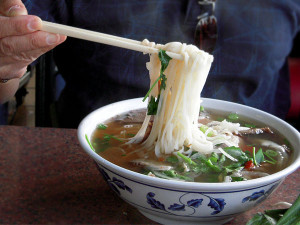 OK let's get back to the basics. Here's a primer for those new to Vietnamese pho. For the pho connoisseurs, please share your views and experience, or check out other posts at the end of this article.
OK let's get back to the basics. Here's a primer for those new to Vietnamese pho. For the pho connoisseurs, please share your views and experience, or check out other posts at the end of this article.
When it comes to pho, a Vietnamese would have the distinct advantage of knowing how to enjoy the noodle dish. Regardless of whether he or she grew up in the homeland or in an immigrant household overseas, he or she would have a mother or a grandmother who made this heart-filling noodle soup for breakfast each day, cooked using snippets of a recipe and with memories of how it is done in their own mother's kitchen. Or at the very least, he or she would have a mother who would herd the family to a restaurant every so often whenever they feel the urge. Eating pho is natural to a Vietnamese.
A non-Vietnamese will not have the same experience. Aside from having to deal with the chopsticks, pho will always look and smell foreign to anyone who did not grow up eating it. When faced with a steaming bowl of this noodle, and especially if it is your first time to sample the national dish of Vietnam, you may have a challenge on your hand. Here are some tips.
Simple Process of Enjoying Pho
If you find yourself in a pho shop for the first time, it's likely that a Vietnamese friend or a friend who knows this dish has invited you. But in the event that you are a real brave soul and decide to go try by yourself, figuring out how to eat pho can be a dilemma.
Thankfully, eating pho is not like eating Western food or even Japanese food. There is no unspoken etiquette that must be observed. This dish is meant to be enjoyed with some noise and a lot of slurping is just fine. So here's the process in a nutshell.
The best way to attack a steaming bowl of pho is to have chopsticks in one hand and a soupspoon in the other. Take in a little broth with your spoon, slurp in some to get a taste of it. Follow it up with the rice noodles using your chopsticks. Then select pieces of ingredients from the bowl and enjoy them individually or together with the broth and noodle. Easy. But there's more.
Taking in the Aroma
Of course, before you start eating pho, you cannot miss noticing the aroma created by the piping-hot broth. Just taking in the rich aroma of beef stock simmered for a really long time with spices, roasted onion and roasted ginger thrown in is enough to whet the appetite. The aroma of the broth really kicks up the anticipation of the poetry that is about to come from that bowl of pho.
The fragrance of the broth is also a good indicator of its quality. Just one sniff will tell you if the spices are balanced in making the soup, if the broth is too salty, if there is monosodium glutamate sprinkled in it, or if the beef stock itself is poorly made. Remember that the soul of pho is in the broth. So enjoying the scent is definitely an important part of the dining ritual.
What to Do With the Garnishing
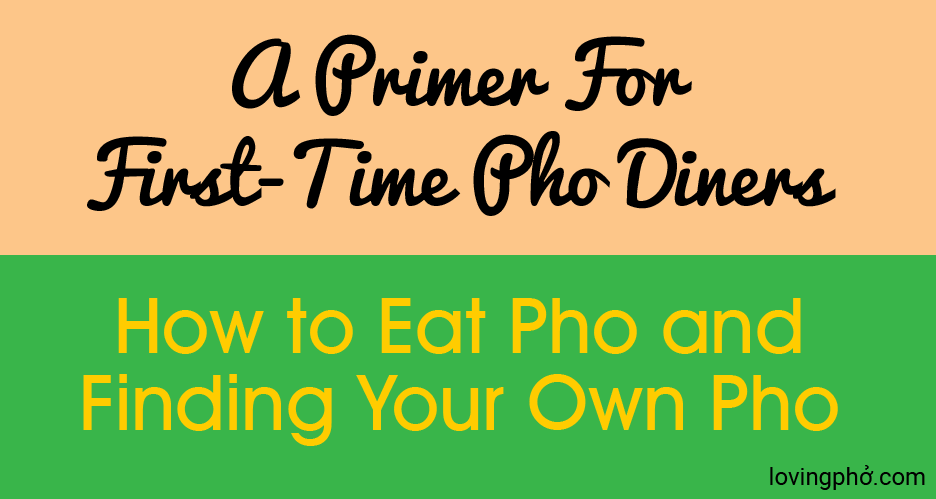 When you are served southern style Vietnamese pho, you will always be provided with a plate of garnishing. This plate would typically contain bean sprouts, culantro, Thai basil, sliced chili and lime wedges. Also you will have hoisin sauce and hot chili sauce available at the table.
When you are served southern style Vietnamese pho, you will always be provided with a plate of garnishing. This plate would typically contain bean sprouts, culantro, Thai basil, sliced chili and lime wedges. Also you will have hoisin sauce and hot chili sauce available at the table.
Is there a specific order by which you should place these herbs in your bowl of pho? The answer to this is no. With the garnishing, you can think of it as finding the best combination that will fit your taste. Each individual garnish contributes its own distinct smell and taste to an already good bowl of pho. You do not want to dump all the garnishing into the bowl at the same time. Rather, just try a few at a time to get your preferred mix. More importantly, give the ingredients several chances (on different visits) and you'll appreciate their roles in this noodle dish.
Here are a few tips on consuming the ingredients:
- Bean sprouts are put in raw for the crunchy factor. Add a little at a time to maintain the crunchiness as you eat, or add them all while the broth is hot to cook them. The downside here is it takes heat to cook your sprouts, and as a result your broth will cool before you finish your bowl of pho. This is why many people request blanched sprouts.
- Dipping the sliced chili in the hot broth releases the oil and makes the broth taste spicier. You can keep them in if you dare. Many do. But really, about half of the jalapenos are not all that hot. I prefer the smaller but hotter Thai peppers or similar varieties.
- Lime juice adds tartness to the broth, which is good if the broth tastes bland, too salty, or too sweet for you. The saltiness and tartness together provide a delicious combination that many people love - I'm one of them. I can do without the other things, but lime I must have.
- The herb leaves are stripped from the stems and can be shredded to bits by hand before they are placed in the bowl. For the best aroma and taste, don't drop them all in at the same time in the beginning. I tear the leaves in smaller pieces, and add them as I go to maintain freshest and uncooked flavor. Even down to my last few chopstickfuls of noodle, I'm still dropping in some fresh bits of basil and culantro. The fragrance is incredible.
Eating pho is always an adventure, even for those who have had it all their lives. For first-time diners, the key is to relax and enjoy. You'll find your own pho in no time.

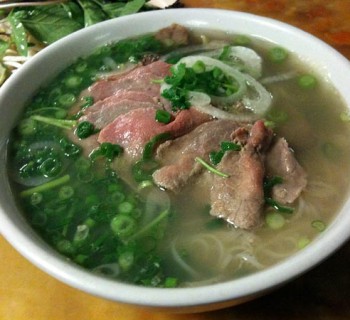
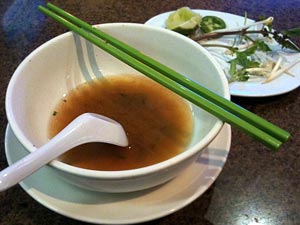
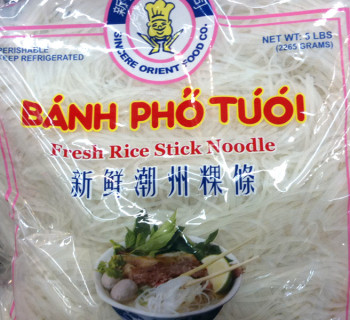
Angelica: The etiquette discussed in this article is based on tradition and what Vietnamese people have found to be best practices for enjoying pho. There is really no other rule about piling on food in your spoon in any way, or any other rules. What you get from others trying to help a newbie are mostly personal preferences, or just what they have learned themselves, rightly or wrongly. So, now that you know pho and love it, just enjoy it the way you want to enjoy it. I wouldn’t say your boyfriend does it wrong either. If it works for him then that is fine. I think what he should have done when first introducing pho to you, was to just give you the basics then let you know that you are on your own to explore it and enjoy it your way.
I’m glad he’s making pho at home. That’s the best way to learn and appreciate it. And I’m sure you’ll do fine with your boba tea. It’s really simple Angelica. How can anyone mess up making tea, right?
Thanks! I was lucky to have my first bowl of Pho in Vietnam (just recently). It was one of the best dishes I have had while traveling period! http://marriedwithmaps.com/2016/02/03/my-first-bowl-of-vietnamese-pho/
@Kyle: Congrats on having your first pho. Many non-Viet people get hooked and can”t let go. Amazing what some food do to a person. Like your blog and keep with it. Thanks for stopping by.
Been enjoying pho this past few weeks. While Pho 79 is hard to get into (long lines and limited parking), I was pleasantly surprised to find their new restaurant, Pho 101 which I ate at today with a friend from Tenn. We had the oxtail as a side with vegetable pho. Too much to eat, but 50% of the customers left with their takeout bags too.
Just found your site. Lots of great info. I might, just might eat like a veteran in a few more months.
@Mike: Glad you enjoy pho and got to try pho with oxtail. Sounds like you’re a pho newbie, but no worries, you’ll find your favorite way to eat pho very soon. Then how you eat your pho is just a personal habit.